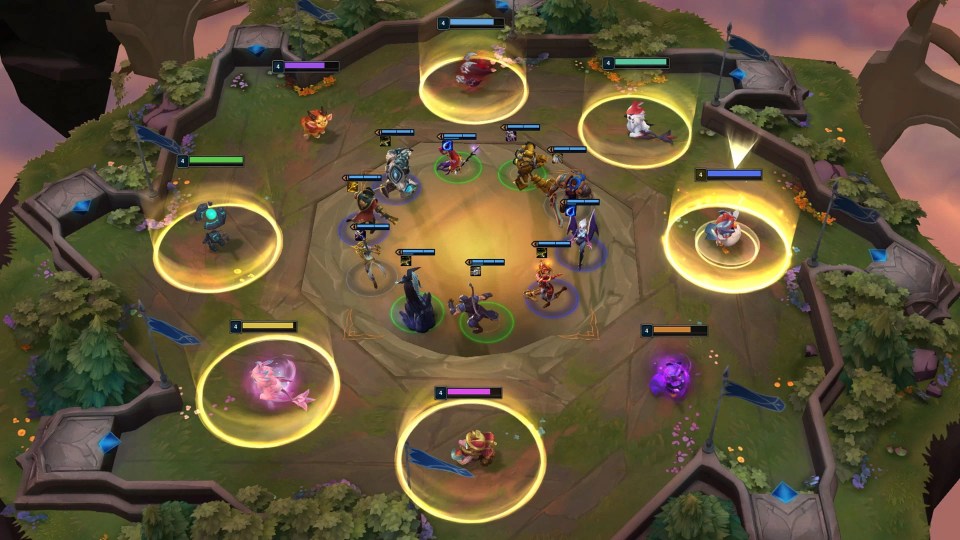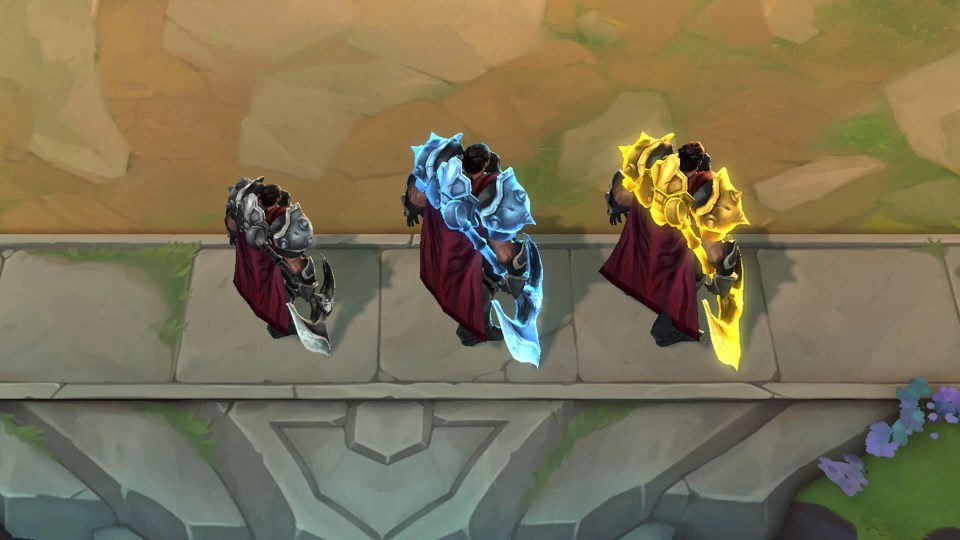teamfight tactics feels like a solved puzzle, so why am i still playing it?
When Teamfight Tactics came out a year ago, it was the latest in a 2019 fad of “auto battlers” or “auto chess” games. This craze started with a Dota mod called Dota Auto Chess that came out in January, which gained huge popularity. Soon, that became Dota Underlords and Auto Chess, then Riot jumped on board with its own game using the champions of League of Legends. Now, Hearthstone has a similar card-based auto battler, and other similar games continue to pop up all over the place from PC to mobile.
I’ve sunk more time into Teamfight Tactics than I’d care to admit, but truth be told, I actually don’t like the game very much. In playing it, I’ve spent a lot of time trying to pick apart the reasons why 1) I don’t enjoy it and 2) yet I still play it, which are the basis of this article.

Please note, I’ve not played any of the other auto chess games, so my observations and discussion in this blog post are going to be limited to Teamfight Tactics.
A Quick Description of Teamfight Tactics
This is how Teamfight Tactics works. During a planning phase, you buy units and place them on the board. Multiple of the same unit combine to become an upgraded version, and some units receive bonuses when on the battlefield with each other.
You can spend the gold you earn each round (which is more if you’re on a winning or losing streak) to roll for new available champions to buy in your five-slot shop, or to buy experience, which allows you to place more units on the board. In true League style, there are also items that you combine and assign to units to buff them.
Then comes an action phase where your units, in the formation in which you laid them out, automatically battle another player’s. The player with the last unit(s) standing wins that round, and the losing player loses some HP depending on how many units remain on the board. The game goes on until one player of the original eight remains.
Every few rounds, there is also a draft round where players, in increasing order of HP, pick up units, with items equipped, going around a carousel. And, there are several rounds interspersed throughout the game where players face off against the AI.
RNG Criticism of Teamfight Tactics
In negative reviews, the largest criticism about Teamfight Tactics is its reliance on RNG. The game is so dependent on what units appear in your shop, what items you’re able to pick up and what your opponents get, that it often feels like RNG is the only determining factor as to your success or failure in a particular match.

Indeed, RNG is a substantial part of the problem, and this criticism is more than fair. But RNG alone doesn’t fully describe why I dislike Teamfight Tactics. I think the main issue is that Teamfight Tactics doesn’t feel like a game so much as it feels like a solved puzzle.
Developers and fans claim that Teamfight Tactics can be won by out-strategising your opponents . This is only half-true, because there’s really a right way and a wrong way to play based on the rolls you get. Strategy guides exist across the Internet, and players who want to win or advance in the ranked system need to study these. They need to memorise team compositions, unit positions, counters and item builds.
Of course, strategy guides exist for many games. The difference in Teamfight Tactics is that a pure, hard knowledge of what is in these strategy guides is the only difference between winning and losing. The work there has been done by folks who thrive on the numbers and minutiae of the systems behind the game, the only kind of player that would be successful at the game while having fun by analysing it.
Teamfight Tactics is About Knowing Things, Not Learning Them
When setting up a new electronic device, most of us don’t read through the entire instruction manual. Similarly, in games, a majority of players want to just jump in. Usually, games are amenable to this, providing lots of fun ways to learn and improve through a difficulty curve or repeated practice.

But Teamfight Tactics is flat. It throws everything at you at once, making it very difficult to learn and discover new strategies. There are so many deeply complex systems at play that it’s difficult to pull apart what your specific change to an item on a unit did when the other player had their units in a certain formation with their own respecitve items.
Out-strategising, in this case, means knowing something from the guides that the other player doesn’t. There are no good spur-of-the-moment decisions that have not been covered in these guides. And the smartness you need to have in Teamfight Tactics is not critical thinking; it’s knowing things. It’s the difference in smarts between acing a physics exam (by critically solving problems) and acing a history one (by knowing all the dates and facts).
The things I enjoy about games – discovery, learning, improving – don’t exist in Teamfight Tactics. Trying new strategies is often punished because you get kicked out of the game early on. It’s hard to learn because it’s hard to know (without the minutiae-level analysis that the people writing the strategy guides do) what you did right and what you did wrong each round. The game provides no clear feedback because all its systems are so intertwined and so much is going on.
Therefore, to succeed, it’s most efficient to search online for the best team comps with their items and positions. The game now becomes a checklist or a flowchart of things to do, because it’s a puzzle that has been solved.
The flatness of Teamfight Tactics extends to the gameplay. Each match follows the same mundane level progression, and a lot of the time is spent passively watching your units fight and/or die and/or dance emote in victory.
If you want to play optimally, you’re forced into a build based on your rolls and the things you pick up, which is the equivalent of not strategising at all. And because you can’t hold out for a favourite build if you want to win, there’s a strange kind of flatness where every build or comp ends up feeling exactly the same.

Our Addictions to Auto Battler Games and Gambling
I’ve covered pretty extensively why I don’t think Teamfight Tactics is a good game. So why, then, do I keep playing it?
Many games draw players in by taking advantage of players’ addiction to progress. But in this case, I realised that my addiction to Teamfight Tactics was in essence an addiction to gambling. I kept queueing with the shining hope of getting that one match where I roll all the units I wanted in the comp that I liked best. The thrill in the actual gameplay was not the placement of my units, but the rolling and rerolling to buy and upgrade units that I wanted.
The jubilance of getting first place in a match, of that big win, makes players want to queue and queue again to try and replicate that feeling.
It wouldn’t surprise me if all auto chess games are solved puzzles, with their popularity coming from players’ addiction to gambling. It’s interesting to consider all systems-based games as ones that have a dominant strategy and do not rely on the traditional feedback loop to motivate players. Simulation games, for example, count on our addiction to progress, while auto chess games may well count on our addiction to good luck.
In Teamfight Tactics, Riot has created a game with lots of visual excitement. Watching the champions duke it out on the board is pleasing to the eye, like watching the animations on slots reels, or the lights flashing above a casino table. It’s a shame that behind all the flashiness is a solved puzzle, a game that is so tied to knowing what the optimal strategy is that it forgets that part of the fun in playing is making mistakes and learning from them.




